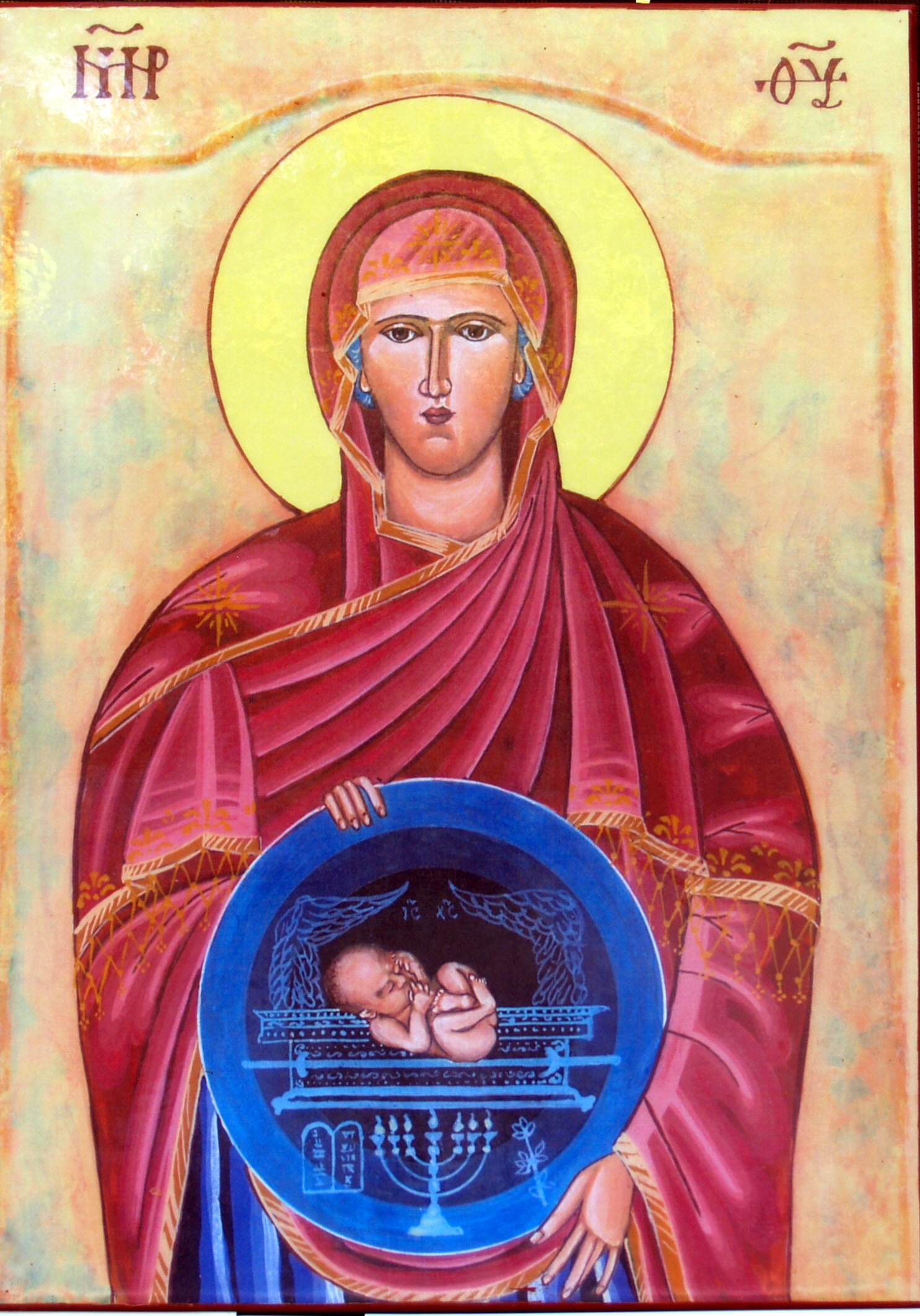Last week, I shared a part of a homily of St. John Chrysostom where he demonstrates that Mary is a daughter of David. This week, I share a paragraph from St. Augustine's work
The Harmony of the Gospels, where he indicates that in addition to being a daughter of David, she is also a daughter of Aaron:
Thus, too, even if one were able to demonstrate that no descent, according to the laws of blood, could be claimed from David for Mary, we should have warrant enough to hold Christ to be the son of David, on the ground of that same mode of reckoning by which also Joseph is called His father (Luke 2:33, 41, 48). But seeing that the Apostle Paul unmistakably tells us that Christ was of the seed of David according to the flesh (Romans 1:3), how much more ought we to accept without any hesitation the position that Mary herself also was descended in some way, according to the laws of blood, from the lineage of David?
 Moreover, since this woman's connection with the priestly family also is a matter not left in absolute obscurity, inasmuch as Luke inserts the statement that Elisabeth, whom he records to be of the daughters of Aaron, was her cousin (Luke 1:5, 36), we ought most firmly to hold by the fact that the flesh of Christ sprang from both lines; to wit, from the line of the kings, and from that of the priests, in the case of which persons there was also instituted a certain mystical unction which was symbolically expressive among this people of the Hebrews. In other words, there was a chrism; which term makes the import of the name of Christ patent, and presents it as something indicated so long time ago by an intimation so very intelligible.
Moreover, since this woman's connection with the priestly family also is a matter not left in absolute obscurity, inasmuch as Luke inserts the statement that Elisabeth, whom he records to be of the daughters of Aaron, was her cousin (Luke 1:5, 36), we ought most firmly to hold by the fact that the flesh of Christ sprang from both lines; to wit, from the line of the kings, and from that of the priests, in the case of which persons there was also instituted a certain mystical unction which was symbolically expressive among this people of the Hebrews. In other words, there was a chrism; which term makes the import of the name of Christ patent, and presents it as something indicated so long time ago by an intimation so very intelligible.
And if Mary is a daughter of Aaron, then she too is a descendent relative of Eleazar (
Numbers 20:22-29). And if she is in relation to Eleazar, then her heavenly, bodily resurrection along with Jesus and Joseph was prefigured as I wrote about in the
post on the Solemnity of the Assumption.
No comments:
Post a Comment